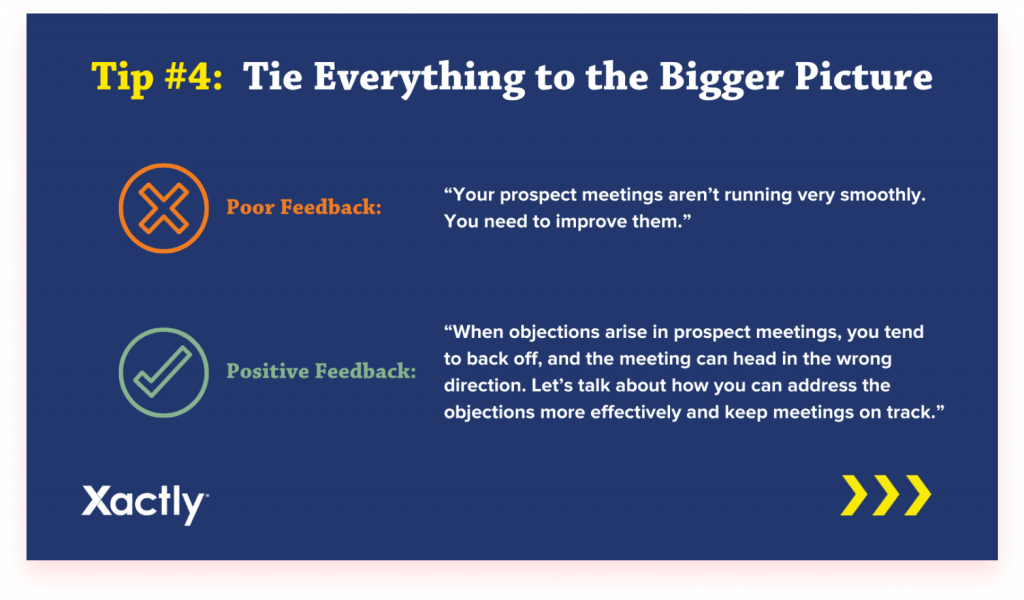16 Sales team management strategies: This is what experts do

Are you managing a sales team for the first time or looking to refine your management skills? In this article, you’ll learn sales team management tips applied by pros to help you lead a winning team. By the end of this guide, you’ll know how to use positive feedback, use incentives, assess your sales team, and much more. Continue reading to discover more sales management strategies.
To begin, let’s explore the meaning of sales management and what a sales manager does.
What is sales management?
Sales management involves hiring, coaching, inspiring the sales team, predicting sales, and creating goals. Also, it includes developing successful strategies to achieve those goals of acquiring leads and generating sales. Many companies measure growth by their sales, so creating an efficient sales management system is essential.

We can breakdown the sales manager’s role as follows:
- Hiring the right people
- Building, training, and motivating a sales team
- Setting realistic sales goals with the team
- Making sales forecasts
- Satisfying customers’ needs
What are the three leading roles of the sales team?
First, you need to understand what a sales team does. A sales team is a group of individuals responsible for achieving sales goals, and the team falls under the supervision of a sales manager.
Sales experts, sales representatives, account executives, and customer reps make up the sales team and work together to reach daily, monthly, quarterly, and yearly sales targets.
The three main roles of a sales team include:
- Sales generation
- Customer acquisition & retainment
- Business growth
Sales team management strategies

What makes a successful sales team? A sales leader can use various approaches to build and manage a high-performing team. Before implementing any technique, start by assessing your sales team’s effectiveness.
Evaluate your sales team
You could be familiar with the Pareto Principle (the 80/20 rule) that recommends generating 80% of the output from a 20% input. It means 20% of salespeople should produce 80% of the business. These reps have the following characteristics.
- Profit margins per sale are higher
- More outstanding sales of new products
- Increased revenue from new customer acquisition
- Increase customer wallet share
- Maintain a customer retention rate of at least 2X
- Getting more referrals
- More satisfied customers
You need to identify the top performers to achieve the 80/20 rule in your company. And those reps that fail to meet the desired outcomes should move to non-selling responsibilities. Use a data-driven approach to ensure you have the right sellers in the right sales roles.
Here are some questions to assess your salesforce’s beliefs, skills, and motivation.
- Which of your top sales performers rank highest in revenue, skills, beliefs, and pipeline?
- Does your team understand how and why your company should use a CRM tool?
- How comfortable is your sales team with your sales tech stack and video-based meetings?
- Do they feel comfortable discussing money?
- What salespeople could be top performers if they had training, new tools, and coaching?
- Which sales roles are most important to your success today?
- What are the best people for each role on your team?
- What team members are best suited to non-sales positions?
Next, describe the sales responsibilities and process by considering the questions below.
- What is the buying process nowadays?
- Are there any sales roles/processes that best serve buyers today?
- Salespeople are likely to encounter resistance and objections. How can you train them, and what mindset will they need?
- For this role, what are the necessary sales skills?
- In what competitive environment will they operate?
- How will management support, supervise, and coach them?
- What skills do your top 20% of sellers possess in this position today?
Going through all these questions will help you retool your sales team to deploy the right reps in the right roles. Here are more sales team management tips.
Create sales plans with your team
A sales plan spells out a clear and specific course of action for each sales representative. Reps can find it challenging to achieve their sales targets without an action plan. As you work with each seller to develop a sales program, ensure it includes the following essential aspects.
- Decide on their goals
- Ensure consistency and progress by creating plans that are easy to follow
- Improve your time management skills
- Prioritize tasks better
- Lead-closing activities
- Where to focus their efforts to generate the most prospects
- Lead nurturing: How and when to do it
3. Set a high standard
People tend to give all their energy and abilities to achieve high realistic goals. Think of someone who wants to reach the top of Mt. Kilimanjaro. They’ll do everything to accomplish the goal because some people have reached the mountain’s crest before.
You need to set a high bar for reps by helping them establish achievable and challenging stretch goals. Your team can aim to attain between 60-70% of the goals-it’s a great confidence booster. The salesforce will feel that the targets are worth pursuing and possible to reach.
4. Decide on the primary metrics
Keeping tabs on each seller’s performance is vital because you can know their strengths and weaknesses. You can nip things in the bud if you see that some reps are going off track. Also, you can create personalized sales coaching and training programs to deal with the gaps.
Sales metrics can help you assess your sales performance. Activity numbers also show how each salesperson is performing. Examples include the number of leads, calls, emails, scheduled meetings, etc. These sales stats are within your control.
5. Choose a sales model
You can either follow an island or assembly sales model for your company. An island sales model is perfect for start-ups and involves each rep on your team being in charge of each stage of the sale process. They’re responsible for lead generation, making sales calls, closing their deals, etc.
The assembly-line sales model distributes roles between four groups: sales reps, customer success associates, account executives, and a lead gen team. Each team handles potential customers and leads throughout the buying process. It’s an approach that’s ideal for well-established businesses.
6. Use the volume-versus-value ratio
The volume-versus-value ratio enables you to inject efficiency into your sales team. Assign your top-selling salespeople to the lowest volume/crucial tasks, like developing relationships and securing referrals. However, your lower value reps need to zero in on high-volume activities, such as lead generation.
You can use this same principle to prospecting by focusing on high-value potential customers
7. Identify roadblocks to sales success

Your sales team may fail to hit sales quotas due to particular barriers. Here are some examples of obstacles and suggestions to resolve them.
Fear of being rejected: It’s normal for new sellers to fear that prospects could turn their calls down or not respond to emails. Let reps know that they shouldn’t take rejection personally. Customers aren’t refusing to engage with them because of their personalities.
Assure your salesforce that they should also expect positive responses from likely buyers. But ensure that your team is well-grounded in the product’s features and benefits. It gives them confidence and belief in your solution.
Let your sellers go through sales scripts to help them prepare for objections. However, they must be human, not robots, during sales presentations, calls, etc. Otherwise, sales reps can sound unnatural to customers and fail to understand their pain points.
Weak communication skills: Remind your team that talking endlessly on a sales call is a sure recipe for disaster. The secret ingredients to a successful discovery call are listening and urging the audience to speak more. Saying ‘tell me more’ can open floodgates of info that can help the rep to get the next step.
Related: 19 Best Sales Discovery Questions To Close More Deals
8. Consider cross-training
Earlier, we mentioned that it’s critical to assess your sales team to put the right salespeople in the right sales roles. But you may remain with underperformers. Cross-training allows you to pair the cream of the crop with low-value sellers to enable them to learn from the best.
A word of caution: some top-class performers may not be willing to mentor others. Use this approach in sales team management if you have five-star reps interested in coaching others.
9. Promote specialization
Salespeople are different, so it’s vital to segment them according to their interests and preferences. Some may prefer working with small businesses or with specific industry sectors. Others may not mind prospecting large organizations.
Have one-on-one meetings with your representatives to learn more about how they want to work.
10. Deploy sales territories wisely
Territory assignment can also make or break your sales management. It would be more beneficial for your business to assign high-performing reps to regions with high value. But it’s crucial to be fair by giving the newbies a chance.
Also, ensure prospecting areas don’t overlap, and each seller on your team has enough accounts. You can use territory management software to map out and assign territories effectively.
11. Incentivize your sales team

Sales motivation is necessary for sales team management to push your salesforce to accomplish more. You can incentivize reps by offering rewards like gift cards, vacation and travel time, flexible working hours, etc.
You can display closed deals with their value or deals completed for each individual on a dashboard visible to every staff. The lively feed encourages a sense of urgency, transparency, and motivation.
Take a step further by celebrating individual and team success stories. Also, encourage your team members to acknowledge the achievements of others.
12. Continue training or coaching
Sales team management training is an ongoing activity to ensure sellers stay up to date, sharpen their skills, and close more deals. You can use several ways of equipping your team with relevant information. Examples include inviting well-known sales specialists, sending reps to conferences, registering for webinars, giving them books, etc.
Lunch breaks are also good opportunities for brilliant sellers to share some tactics with others. It’s a cost-effective way to improve performance.
Related: Find out how you can use sales meetings to upskill your sellers.
13. Use sales management tools
Sales reps should spend most of their time prospecting to overfill their pipeline instead of doing admin tasks. A good CRM sales management tool can automate all the daily activities of the seller to allow them to concentrate on what matters. It makes them more productive and efficient in time management.
14. Understand your competitor
While salespeople need to be well-versed with your solution, they should also understand your competitors. You can ask the team to conduct a SWOT analysis (Strengths, Weaknesses, Opportunities & Threats) or a competitor matrix. Either way, sales reps can deal with any questions during the buying process.
Sellers can differentiate your company from your rivals and show potential buyers why your product/service is the best.
15. Build a winning culture
Company culture is a broad concept and can mean different things. But as a sales manager, it’s crucial to create a winning culture around specific values and beliefs. Consider developing your company culture on the following sales team management ideas.
- Continuous feedback
- Communicate proactively
- Recognizing and praising others
- A reward system that is fair and incentivizes employees
- No tolerance for negativity, trash-talking, and persistent underperformance
- Autonomy with self-accountability
- Having a passion for excellence and the desire to achieve results
- Win-at-all-costs mentality fueled by a hatred for losing
- Mentorship, respect, and integrity
16. Provide constructive feedback
Feedback during performance reviews is essential to improve sellers’ performance. Your feedback should be positive and constructive. It’ll “reinforce positive behaviors that contribute to performance and eliminate negative behaviors that can detract from performance.”
For feedback to be meaningful, it must be timely, specific, objective, and constructive. A prompt response deals with an issue ASAP, focuses on that particular matter, is objective-factual without any personal bias, and is constructive-positive with a solution.
Check out the following examples from Xactlycorp.com that show how to deliver positive feedback in sales team management.
Be factual and avoid hearsay

Poor Feedback: “I’ve heard that you’re making fewer calls during the day and slacking on the job. What’s going on?”
Positive Feedback: “I took a look at your call logs and noticed there’s been a drop in the number of calls you’re making each day. Is there something going on that is keeping you from making calls?
Be straight to the point

Poor Feedback: “Your prospect meetings aren’t running very smoothly. You need to improve them.”
Positive Feedback: “When objections arise in prospect meetings, you tend to back off, and the meeting can head in the wrong direction. Let’s talk about how you can address the objections more effectively and keep the meetings on track.”
Engage and be genuine

Poor Feedback: “You’re doing a good job.”
Positive Feedback: “You have really improved your meeting hosting. In the call with ‘X’ prospect the other day, you did a great job navigating their concerns and keeping the call on track. Great job!”
Focus on the bigger picture

Poor Feedback: “Your performance this quarter has dropped. It needs to improve.”
Positive Feedback: “Your number of meetings has dropped this quarter and is bringing the team performance average down. Let’s dive into where you’re struggling, so you can feel confident in your prospect conversations and how you can feel more motivated and empowered in your role.”
Be fair in praising & recognizing effort

Poor Feedback: “You hit your quotas, but you don’t ever exceed them. Why not?”
Positive Feedback: “You are always a consistent performer. You reach your goals, deliver solid deals, and are a valuable asset to the team and company. Are you getting everything you need to do your job effectively?”
In closing
Sales management is critical for your company because it involves hiring the right people, placing them in the right roles, and coaching reps to improve sales performance. As a sales manager, you’re responsible for sales team management to ensure you achieve sales goals. You have a wide range of sales management strategies to lead a winning team.




